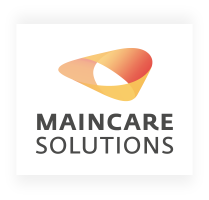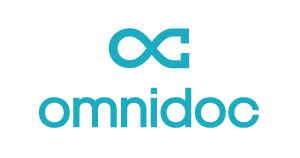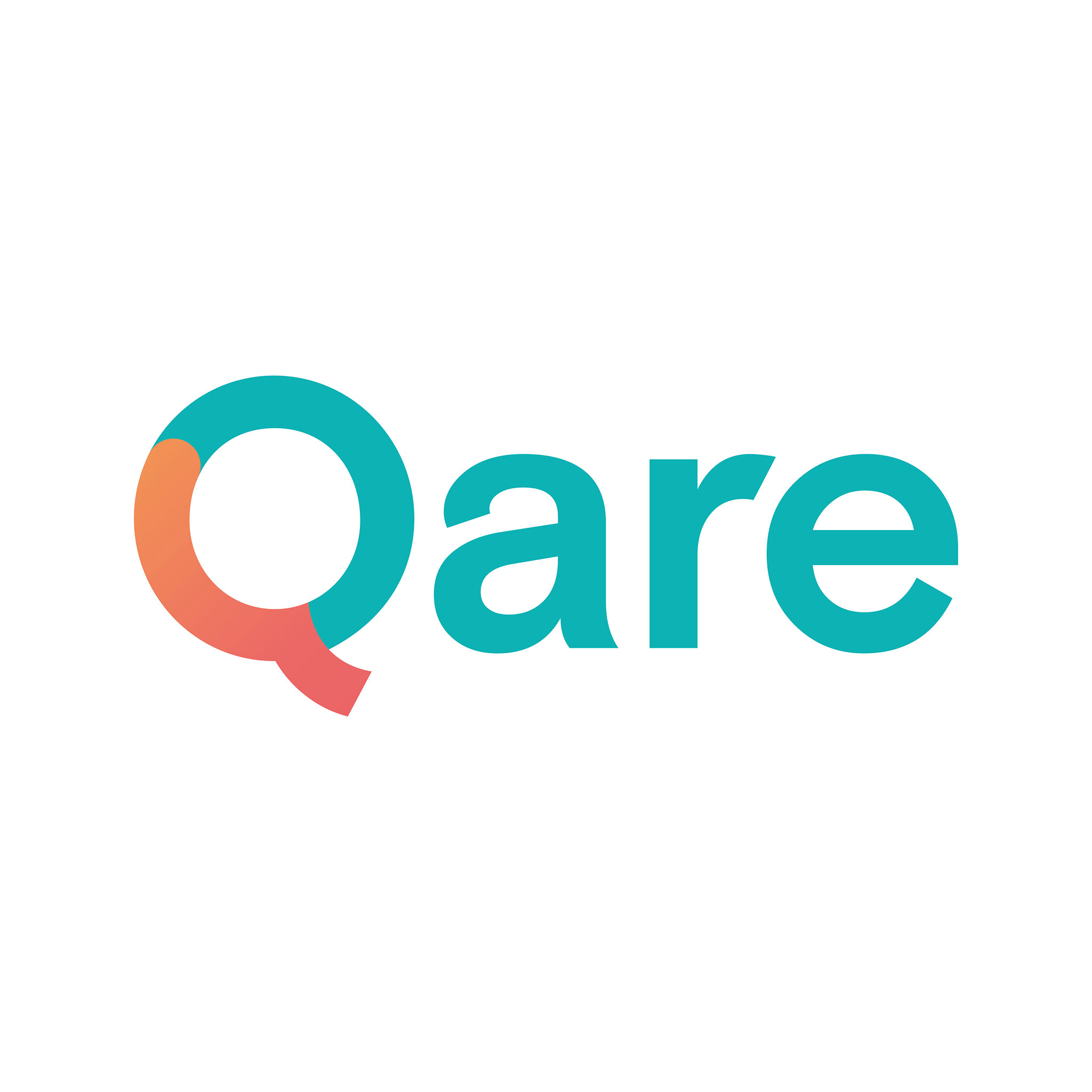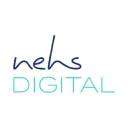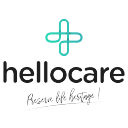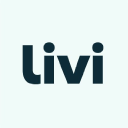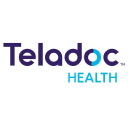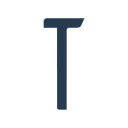Synthèse
The global telemedicine market has grown significantly, reaching a size of around $72 billion in 2022. The forecast compound annual growth rate (CAGR) is 12.9% between 2023 and 2032, and the market is expected to reach $242.2 billion by the end of this period. This growth is mainly due to the increasing prevalence of chronic diseases, an aging population requiring patient management, and the impact of the Covid-19 pandemic, which has stimulated the adoption of telemedicine. The teleconsultation segment is particularly important, accounting for 41% of the market in 2022, reflecting increased demand for home monitoring services.
Geographically, North America holds more than half of the global market share, with the US industry expected to maintain a CAGR of 12.5% between 2023 and 2032. Similarly, the European market is expected to reach over $66 billion by 2032. Key players influencing the market include Allscripts Healthcare Solutions Inc, AMD Global Telemedicine and American Well. Telemedicine use varies considerably from country to country, with some regions, such as Saudi Arabia, China and India, showing relatively higher adoption rates.
Telemedicine: a dynamic force in healthcare innovation in France
The French telemedicine market is changing rapidly, reflecting global trends as demand for remote medical services continues to grow. One of the main drivers of this growth is the aging of the population, coupled with an increase in chronic illnesses requiring constant medical monitoring. The COVID-19 pandemic played a crucial role, propelling the number of teleconsultations from around 400,000 a year before the pandemic to over a million a week at the height of the health crisis. Between January and October 2020, the frequency of teleconsultations tripled for patients and quintupled for healthcare professionals. This rapid adoption demonstrates the potential of telemedicine not only to meet immediate challenges, but also to modernize the French healthcare system in the long term.
The French population is becoming increasingly familiar with telemedicine, with the proportion of those who have a good opinion of it rising from around 60% to over 70% in the space of a year. Furthermore, most French people are familiar with the terms "telemedicine" and "teleconsultation", with familiarity rates of between 80% and 90%. On the other hand, awareness of tele-expertise and remote medical monitoring is lower, with awareness rates of between 50% and 65%. The French public perceives telemedicine favorably, praising the efficiency it offers in saving doctors' time, while expressing concerns about the potential dehumanization of the doctor-patient relationship.
Despite these concerns, telemedicine is widely seen as a way of reconnecting with patients in medically underserved areas and saving them time by providing access to healthcare at a distance. By the end of 2021, telemedicine solutions adopted by the majority of healthcare hubs will cover teleconsultation and tele-expertise, reflecting their essential role in the delivery of healthcare services.
The French telemedicine market, which was part of the wider e-health market valued at around around 3 billion euros, has certainly evolved, with telemedicine alone accounting for around 5.2%, or some 155 - 160 million euros. Given recent trends and the scale of fundraising in the e-health sector, these figures would have risen considerably.
In conclusion, the telemedicine landscape in France is being reshaped by multiple factors such as technological advances, changing patient needs and the French government's commitment to digitizing healthcare. Ongoing expansion augurs continued market growth, driven by innovation, public demand and strong support from national healthcare policy.
Leading telemedicine providers shaping the global digital health landscape
As the telemedicine market experiences strong growth worldwide, several key players are emerging as the architects of this burgeoning field. These organizations are not only extending their influence, they are also playing an integral part in redefining the way healthcare services are delivered around the world.
- Allscripts Healthcare Solutions Inc A leading provider of healthcare IT solutions, Allscripts offers advanced electronic medical record (EMR) technologies and practice management solutions that facilitate the management of clinical, administrative and financial operations within healthcare organizations. Its offerings are geared towards telehealth to meet the growing demand for remote care.
- AMD Global Telemedicine: AMD Global Telemedicine is a pioneer in telemedicine equipment and technologies, facilitating remote clinical care services. It supplies equipment and systems that enable healthcare providers to carry out consultations and diagnoses, thus reducing the distance between patients and healthcare providers.
- American Well: Known for its Amwell telehealth platform, American Well is revolutionizing the way healthcare is delivered. It offers virtual care technologies that connect healthcare professionals with patients for immediate and convenient medical consultations, making a significant contribution to healthcare accessibility.
- Oracle Corporation (Cerner): After acquiring Cerner, a major player in healthcare IT, Oracle has entered the telemedicine sector head-on. Cerner's systems are designed to improve and simplify the patient journey through seamless data integration, enhancing healthcare delivery and telemedicine capabilities.
- Cisco systems: Well-known in the IT sector, Cisco has also carved out a niche for itself in the telemedicine market. Leveraging its expertise in network technologies, it provides a telehealth infrastructure that enables secure, real-time communication between patients and healthcare professionals.
- Eagle Telemedicine: Eagle Telemedicine specializes in telemedicine services that give hospitals and clinics access to a wide range of medical specialties. Its solutions ensure that even rural and underserved communities can access high-quality healthcare expertise, without geographical limitations.
- Honeywell International Inc.: A diversified leader in technology and manufacturing, Honeywell International is extending its tentacles into the telehealth market, offering telemonitoring systems and tools for the care of the elderly.monitoring systems and health management tools that help chronically ill patients manage their health and communicate effectively with their healthcare providers.
- Koninklijke Philips NV: Philips is widely recognized for its innovations in healthcare technologies, including telehealth solutions. The company focuses on creating a connected healthcare ecosystem, in which data and patient monitoring systems enable personalized, more proactive healthcare.
- McKesson Corporation: McKesson is a leading name in healthcare supply chain management, pharmaceutical distribution and healthcare IT.
à la compréhension de ce marché
Détail du contenu
 Informations
Informations
- Nombre de pages : 30 pages
- Format : Version digitale et PDF
- Dernière mise à jour : 20/11/2022
 Sommaire et extraits
Sommaire et extraits
1 Market overview
1.1 Definition and scope of the study
Telemedicine is a sub-area of e-health, which encompasses innovations in the use of information and communication technologies (ICT) for healthcare activities.
In France, since 2009, telemedicine has been regulated, and the Public Health Code defines 5 types of medical acts covered by telemedicine [Article L6316-1 Legifrance]:
- Teleconsultation: enabling a medical professional to consult a patient remotely;
- tele-expertise: which enables a medical professional to seek the opinion of other medical experts on the basis of elements in a patient's medical file;
- remote medical monitoring: enabling a healthcare professional to make decisions about patient care;
- medical remote assistance: enabling a medical professional to provide remote assistance to another professional during the performance of a procedure,
- telemedicine also includes medical response to calls made to the SAMU (emergency medical service) or the Centres 15 (emergency call centers).
This study covers all these medical acts, and shows how telemedicine can be a solution to medical deserts and the current situation where healthcare expenditure is growing faster than GDP.
E-health encompasses innovations in the use of information and communication technologies (ICT) for health-related activities. Sales in France were estimated at 3 billion euros in 2016 . At the time, telemedicine sales accounted for 5.2% of the e-health market, or 156 million euros. [BPI]
It has not been updated to 2022, but has undoubtedly evolved since 2016. Indeed, between 2016 and 2022, 250 fundraisings took place in the e-health sector, with a total value over this period of 3 billion euros. The year 2022 also saw significant fundraising, with a total value of over 1 billion euros. In 2025, they are expected to raise over 1.2 billion euros, an increase of 14% on 2022. [Mind Health]
The global telemedicine market is also growing rapidly. It is valued at $72 billion in2022and isexpected to grow at a CAGR of 12.9%over theperiod 2023-2032, reaching$242.2 billion.it is dominated by North America, which holds more than half of the market share. [Global Market Insights]
Market growth is being driven by both the prevalence of chronic diseases and an ageing population. In addition, the Covid-19 pandemic has had a strong and positive impact on the development of telemedicine. In France, between January and October 2020, the number of teleconsultations increased by a factor of 3 for patients and by a factor of 5 for healthcare professionals. [Agence du numérique en santé]. Among the 31 OECD members who took part in a telemedicine survey in 2021, 23 countries out of 31 authorize the use of telemedicine services.telemedicine services, 6 more than before the pandemic (Estonia, Germany, Iceland, Luxembourg, Portugal and the United States). [OECD]
Finally, the French government is increasingly mobilizing to digitize the healthcare system and meet current challenges, notably through : the multiplication of ARS (Agences Régionales de Santé) actions, the "Ma santé 2022" plan which aims to accelerate the digital shift, or the reimbursement set up by the Assurance Maladie.
1.2 The global market: regional differences but an overall growth trend
Worldwide market size
Telemedicine sales France, ****-****, in billions of US dollars Source: ****
The size of the telemedicine market reached approximately $** billion in **** and is expected to grow at a CAGR of **.*% over the period ****-****, reaching $***.* billion .
The increasing prevalence of chronic diseases and the growing need for patient management ...
1.3 The national telemedicine market: potential and barriers to entry in the wake of the pandemic
Value created by telemedicine
In June ****, the Institut Montaigne published a report entitled: E-santé: augmentons la dose! In the first chapter of this report, the institute takes stock of e-health in France, and seeks to identify the value-creation potential of the various segments. For the telemedicine segment, the report praises the ...
2 Demand analysis
2.1 Covid-19 sees a recomposition of demand: knowledge of telemedicine and age of patients
The boom in telemedicine since the health crisis
The number of teleconsultations was around ***,*** a year before the crisis, and rose to over a million a week at the critical moment of the health crisis.
Between January and October ****, telemedicine experienced enormous growth: the number of teleconsultations increased *-fold for patients ...
2.2 Improving French people's opinion of telemedicine and avenues for improvement
As we've just seen, teleconsultation was the most widely used telemedicine tool for GHTs in **** , so we took a look at the current state of the practice.
Do patients and doctors like the principle of teleconsultation?
Patient and physician satisfaction with teleconsultation France, ****-****, in percent Source: ****
The proportion of French ...
2.3 Tele-expertise
Telerexpertise enables a healthcare professional to remotely seek the opinion of one or more colleagues for their particular skills, using digital technology. It brings together a doctor with a request and a doctor in need. Telerexpertise acts have been billable to Assurance Maladie since February **, ****.
Telerexpertise consultations
Omnidoc is a telerexpertise ...
2.4 Consultation habits
It may be interesting to know the habits of the French towards health and doctors. We're going to base ourselves on a **** study by Doctolib, as unfortunately few studies have been carried out on these issues. Here are some interesting results:
Share of main reasons for GP consultations France, ****, in percent Source: ...
3 Market structure
3.1 Telemedicine within the complex structure of e-health
Telemedicine is a segment within a complex ecosystem involving health and digital technology: e-health. A French government agency, theAgence du numérique en santé, is responsible for regulating, operating, promoting and enhancing the digital transformation of the healthcare system, and this is structured around * orientations:
Source: ****
Telemedicine is part of the ...
3.2 Player structure
The two types of offer
Under the impetus of the French government, a public offering has developed through regional platforms. The introduction of common law reimbursement by the French health insurance system has led to the emergence of a private sector (***) offering services directly to healthcare professionals and patients, making the ...
3.3 Regional players
Regional platforms refer to all the platforms implemented under the guidance of the Agences Régionales de Santé and their Groupements Régionaux d'Appui au Développement de la e-Santé. In ****, ASIP Santé (***) listed ** regional telemedicine platforms in one of its publications[***]. The Agency has not updated its list since.
Here ...
3.4 Diversity of private players: a market that is becoming more structured
Diversity of private players
The typology of players is highly varied, due to the diversity of products required to carry out telemedicine procedures:
Large groups (***) also have a role to play in this field, thanks to their ability to retrieve, store and process large quantities of data. SMEs and startups (***): French ...
4 Offer analysis
4.1 Specialties covered: still incomplete but growing
The offer of diversified services is still most often carried by regional platforms, whose logic and economic model will have to be rethought following the arrival on the market of private providers of MLT platforms.[***]. Services can be offered by:
Regional telemedicine platforms: Agences Régionales de Santé (***) ; Public service providers: ...
4.2 The regional platform offering: types of platform, functionalities...
Different types of regional platforms[***]:
Telemedicine platforms are mainly available:
Via the Internet, in SaaS mode (***) ; Via a web portal requiring installation of a lightweight application (***); Via a heavy-duty application (***).
Mobile access (***), on the main mobile environments in the case of an application.
Different platform functionalities
ASIP Santé's latest survey ...
4.3 Innovative offers
Examples of start-ups offering teleconsultation services[***]
Doctolib
The launch of its teleconsultation solution came late, in January ****. However, by September ****, more than **,*** teleconsultations had already been carried out on Doctolib, representing two-thirds of the procedures reimbursed by the French social security system. Between January **** and March ****, ** million teleconsultations were recorded, including ...
4.4 Different issues
Various issues arising from the existence of a multiplicity of players
Clarification of the offer, clarifying the positioning of regional platforms and private platforms. As a result of this abundance of offerings, there is a lack of standardization, which can be limited thanks to support and guidance tools for players. These ...
5 Regulations
5.1 General regulations
The entry of telemedicine into common medical practice law
Since its introduction into French law in ****(***), telemedicine has developed around a number of priority areas.priority axes embodied in the various guides and specifications published by the DGOS, as well as legislative and regulatory texts:
In ****, article ** of the French social ...
5.2 Government measures to help integrate the practice
Government intervention
There are several reasons why public authorities want to make telemedicine more widespread:
Combating medical deserts; Reducing appointment waiting times (***); Control health-related expenditure. The economic stakes are also high, since telemedicine, by enabling better risk prevention and optimizing the organization of care, could save money.organization of care, telemedicine ...
6 Positioning the players
6.1 Positioning the players
- Ortif- Outil Régional de Télémédecine d’Île-de-France
- Maincare
- Omnidoc
- Qare (HealthHero)
- Doctolib
- NEHS Digital
- Feeli
- Hellocare
- Livi (KRY International AB)
- Medadom
- Teladoc
- Tessan
- Tunstall Vitaris (Tunstall Healthcare)
 Liste des graphiques
Liste des graphiques
- Connaissances des différentes dimensions de la télémédecine par les Français
- Les avantages et inconvénients de la télémédecine
- Utilisation des solutions de télémédecine par les GHT
- Fonctionnalités des plateformes régionales de télémédecine
- Chiffre d'affaires mondial de la télémédecine
Toutes nos études sont disponible en ligne et en PDF
Nous vous proposons de consulter un exemple de notre travail d'étude sur un autre marché !
Dernières actualités
Entreprises citées dans cette étude
Cette étude contient un panorama complet des entreprises du marché avec les derniers chiffres et actualités de chaque entreprise :
 Choisir cette étude c'est :
Choisir cette étude c'est :
Accéder à plus de 35 heures de travail
Nos études sont le résultat de plus de 35 heures de recherches et d'analyses. Utiliser nos études vous permet de consacrer plus de temps et de valeur ajoutée à vos projets.
Profiter de 6 années d'expérience et de plus de 1500 études sectorielles déjà produites
Notre expertise nous permet de produire des études complètes dans tous les secteurs, y compris des marchés de niche ou naissants.
Notre savoir-faire et notre méthodologie nous permet de produire des études avec un rapport qualité-prix unique
Accéder à plusieurs milliers d'articles et données payantes
Businesscoot a accès à l'ensemble de la presse économique payante ainsi qu'à des bases de données exclusives pour réaliser ses études de marché (+ 30 000 articles et sources privées).
Afin d'enrichir nos études, nos analystes utilisent également des indicateurs web (semrush, trends…) pour identifier les tendances sur un marché et les stratégies des entreprises. (Consulter nos sources payantes)
Un accompagnement garanti après votre achat
Une équipe dédiée au service après-vente, pour vous garantir un niveau de satisfaction élevé. (+33) 9 70 46 55 00
Un format digital pensé pour nos utilisateurs
Vous accédez à un PDF mais aussi à une version digitale pensée pour nos clients. Cette version vous permet d’accéder aux sources, aux données au format Excel et aux graphiques. Le contenu de l'étude peut ainsi être facilement récupéré et adapté pour vos supports.
 Nos offres :
Nos offres :
the telemedicine market | France
- Quels sont les chiffres sur la taille et la croissance du marché ?
- Quels leviers tirent la croissance du marché et leur évolution ?
- Quel est le positionnement des entreprises sur la chaine de valeur ?
- Comment se différencient les entreprises du marché ?
- Données issues de plusieurs dizaines de bases de données
Pack 5 études (-15%) France
- 5 études au prix de 75,6€HT par étude à choisir parmi nos 800 titres sur le catalogue France pendant 12 mois
- Conservez -15% sur les études supplémentaires achetées
- Choisissez le remboursement des crédits non consommés au terme des 12 mois (durée du pack)
Consultez les conditions du pack et de remboursement des crédits non consommés.
- 06/07/2023 - Ajout des informations de l'entreprise Tunstall
- 06/07/2023 - Ajout des informations de l'entreprise Tessan
- 06/07/2023 - Ajout des informations de l'entreprise Teladoc
- 06/07/2023 - Ajout des informations de l'entreprise Medadom
- 06/07/2023 - Ajout des informations de l'entreprise Livi
- 06/07/2023 - Ajout des informations de l'entreprise Hellocare
- 06/07/2023 - Ajout des informations de l'entreprise Feeli
- 18/02/2023 - Ajout des informations de l'entreprise NEHS Digital





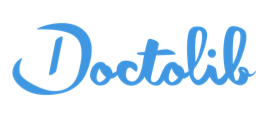 Doctolib achète le néerlandais Siilo afin de faciliter les communications entre professionnels de santé. - 02/03/2023
Doctolib achète le néerlandais Siilo afin de faciliter les communications entre professionnels de santé. - 02/03/2023

